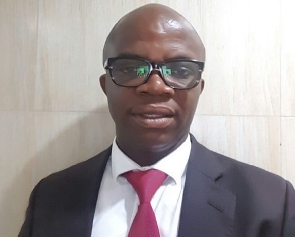Ghana on Tuesday joined Benin, Cape Verde, and Georgia as the first countries to have successfully signed a consecutive compact of the United States’ Millennium Challenge Account.
The second compact signed by President John Mahama will allow Ghana to draw up to US$498.2 million from the Millennium Challenge Corporation, an innovative and independent US foreign aid agency that is championing a global campaign against poverty.
Ghana’s previous compact, a US$547 million aid, was tailored to boost farmers’ incomes through private sector-led agribusiness development as well as strengthening production, helping move goods to market more efficiently, and improving farm communities and farmers' livelihoods.
However, the project that stood out in Compact One was the 14.1km George Bush N1 Highway which extends the Tema Motorway from the Tetteh Quarshie Interchange to Mallam Junction. The US$169 million highway under the Transportation Project of Compact One was built mainly to link the Kotoka airport and the Tema port.
Compact Two aims at ensuring a more sustainable power sector after years of intermittent crises which have seen industries relying on expensive petrol-fired power plants. In addition to power generation, the distribution of power also faces dire challenges, a problem Compact II wants to address.
This funding agreement comes on the heels of General Electric’s recent agreement with private and public stakeholders to help generate 1,000 megawatts of electricity from a soon-to-be-built gas-fired power generating plant in a single location.
The Ghana 1000 initiative is the first of its kind in Ghana on account of the amount of power to be generated from a single location and its potential for lowering the cost of electricity through the gas-to-power initiative.
The MCC deal provides the financing that will ultimately help in actualising Ghana’s overall goal of self-sufficiency in power generation.
The Electricity Company of Ghana (ECG) has succeeded in reducing system losses from 27.2 percent in December 2011 to 22.48 percent in April 2013, but this is still below the international benchmark of 15 percent.
These losses are due to chronic power theft, metering deficiencies, billing and revenue collection challenges, as well as technical losses mostly attributed to obsolescent equipment among others.
The Compact is hoping to turn around the fortunes of ECG through the introduction of private sector participation as well as targetted infrastructure investments and reforms in power generation. According to the MCC, the reforms and investments will “jointly contribute to a more functional, creditworthy and self-sustaining power sector.”
The first tranche of the Compact will see MCC commit US$149.6million to the ECG Financial and Operational Turnaround Project. Other projects will receive combined resources of US$158.6million under the first tranche.
If certain conditions are met within two years of coming into force of the Compact, a further US$190 million will be provided for the ECG Financial and Operational Turnaround Project under Trance Two.
Just like Compact One, which required that Ghana provide about US$40million in counterpart funding towards listed projects, Ghana is again expected to provide at least 7.5 percent of the total MCC funding.
This amount would be at least US$37.4million if Ghana is able to unlock the full US$498.2million.
In creating a sustainable power sector, the Compact will pursue a two-pronged approach – changing the governance and management of ECG by bringing in a private sector operator coupled with infrastructure and foundational investments designed largely to reduce losses and improve service quality.
The Compact is aiming to achieve this objective, which will benefit at least 4.8 million people in the short-term and 7.8 million people in the long-run, by encouraging reforms such as Private Sector Participation (PSP) and modernising ECG’s operations.
The Compact is also targetting reduction in commercial losses and increased revenue collection, which will be done mainly through improvement in metering systems and the installation of more prepaid meters in areas accustomed with the postpaid system.
Further interventions will focus on reducing technical losses through the lowering of thermal losses in distribution systems. Overall, all these improvements should see relative stability in power supplied to homes and factories.
To reduce outages, the Compact will oversee the introduction of improved system protection and sectionalising devices in the power distribution system, which currently dispenses close to 2,000MW during peak periods of demand.
A similar project to that of ECG’s will be implemented for the Northern Electricity Distribution Company (NEDCo). The company, which is in charge of power distribution in the northern regions, will benefit from US$5million in technical assistance.
If the first year of the Compact’s implementation is successful, MCC will make up to US$49.2 million further investments in NEDCo.
Not only is the compact looking at improving power supply but also putting in place a tariff structure to strengthen the current formula being used by the Public Utilities Regulatory Commission (PURC) -- which reviews tariffs every quarter.
The tariff review falls under the Regulatory and Capacity Building Project of the Compact. Five million dollars has been earmarked for this project. This project is heavily linked to the turnaround of the two power distribution companies.
Other components of the Compact will also address constraints faced by micro, small, and medium enterprises (MSMEs) in accessing electricity. The Access Project will be done at US$10 million cost and will try out several interventions aimed at reducing barriers to legal connections in a sample economic enclave.
According to the signed agreement, “The Access Project will address the problems caused by illegal connections, improve safety and security in target areas and strengthen relationships between end- users, government and utility companies.”
Beyond the immediate investments in the power distribution sector, the MCC is also looking to stimulate private sector participation in the power generation sector. Currently, Ghana has an installed capacity of 2,846.5MW, but it’s only about 2,000MW that is available for power consumers.
Demand is estimated to be growing at about 200MW annually and the involvement of MCC in providing technical feasibility studies will provide “shovel-ready” projects should the private sector want to engage in power generation.
According to IMANI, a local policy think-tank, “considering the ‘airtight’ execution of the first compact of the Millennium Challenge Corporation, the benefits of which cannot be disputed on any empirical grounds, coupled with factors such as monitoring of disbursements and management of the project by MiDA and other authorities, we can confidently trust the execution of the second compact to live to its contractual obligations -- which do not include a sale of ECG and/or NEDCo.”
The effective implementation of the second Compact, according to the policy think-tank, will ensure that Ghanaians of all income levels are provided with adequate power supply at affordable prices through capital injection that will drive efficiency gains, economies of scale, and availability of cheaper feedstock (such as liquefied natural gas).
Business News of Thursday, 7 August 2014
Source: B&FT













